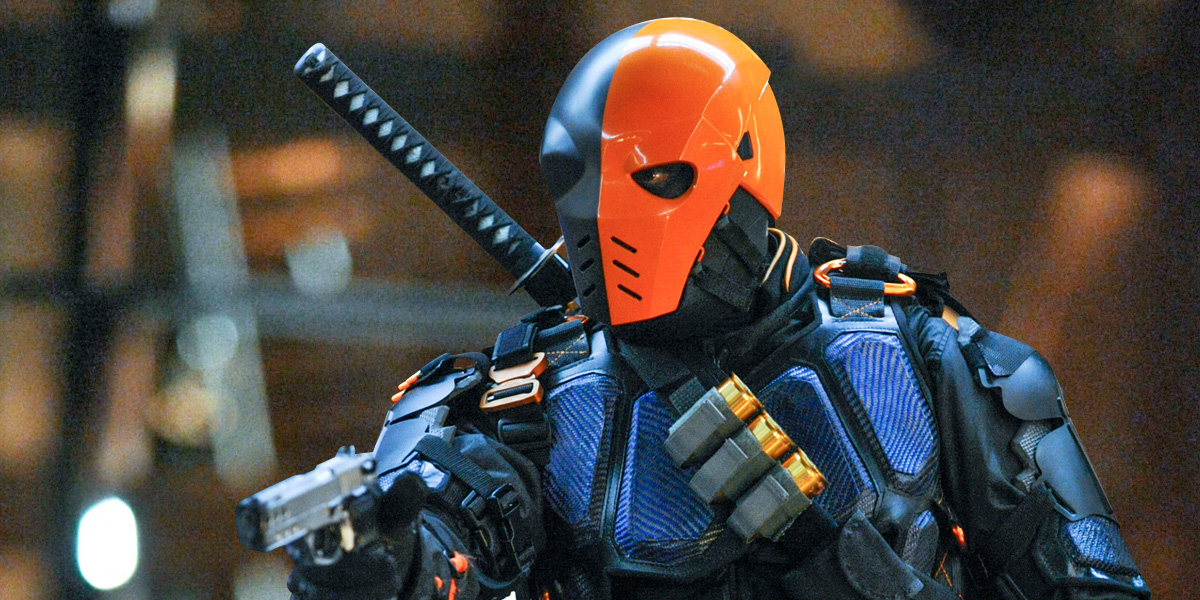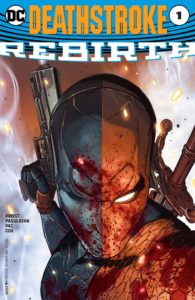

@MichelleKisner
Christopher Priest (Conan, Black Panther) — credited as PRIEST, perfect for this congregation! — makes his return to comics by penning the newest reboot of Deathstroke’s story with DC’s Rebirth series. This opening has Slade Wilson’s tale being told through various flashbacks which serve as a more organic way to introduce new readers to some of his defining characteristics. The narrative is pretty light on exposition which builds up a whole lot of mystery and intrigue to pique further reading into the series. There is some political leanings as well, with Deathstoke noting the lack of American military response to a massacre in an African village. “These are black people. The Marines aren’t coming here.”
While it can be a little hard to follow the flow of the story, since it jumps around time periods so much, more things may become clear with subsequent issues. Former Incredible Hulk stalwart Carlo Pagulaya’s art is clean and serviceable and his framing of action scenes is fluid and interesting. Jeromy Cox’s somber coloring only enhances the comic and I especially enjoyed his scenery work. We follow Slade around to several very different climates and locales and Cox manages to capture the feel and tone of them perfectly. In this Priest, we pray. 4/5 Vibranium Scriptures.
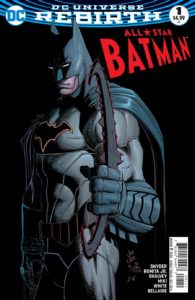

@onemyke
“All-Star” being followed up by “Batman” is a little redundant when talking about the hero where DC Comics got it’s namesake. Supes’ symbol may arguably be the most recognized in the world, but Bats undoubtedly has him beat in the hearts of everyone; so, yeah, it’s kind of weird that decades later we can still see a version of the Dark Knight that we haven’t seen before. Enter this week’s All-Star Batman by Scott Snyder (American Vampire), Declan Shalvey (Moon Knight), Danny Miki (X-Men) and John Romita, Jr. (Amazing Spider-Man), which casts Batman in a different light, literally. Most of the book takes place during the day, yet Snyder effortlessly still finds way to make Bats frightful.
In a book that’s both action packed and stakes setting, Snyder still finds time to add in flair that may soon be iconic–like Batman wielding a chainsaw in the middle of a field–all while pushing the needle forward with his new partner (not just another Robin but “something different”, according to Bruce Wayne himself). The book offers a sidestory towards the end where we’ll inevitably learn more about this new sidekick/partner. The writing is true, yet progressive and the art is money on the page. Some of the designs of the characters, however, are a little more jarring than seeing the Bat in farm-country. Everyone, including the supposedly intimidating Two-Face has a same-y CW, youngin’ build to them, which would make sense in reality, but doesn’t fly off the page dynamically. Ultimately it’ll have to do; it’s all just a vehicle for Snyder’s blockbuster writing anyway. 4/5 Bat-Saws.
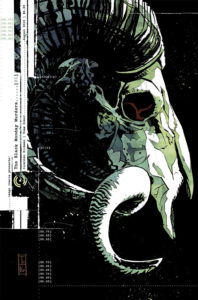

@IAMSCF
Murder, money, magic. At their roots, they’re about Power. Power and influence. This is the theme of Black Monday Murders. From the Stock Market Crash of 1929 to a staged murder of today, it’s all connected to the Caina: a corporate-like structured group of individuals that has been (behind the scenes) controlling money and power the world over. Like most of Jonathan (Fantastic Four, Nightly News) Hickman‘s creator owned books, this book is dense, as world building is something Hickman does like nobody’s business. Information is presented in the story, in text book pages, graphs, charts — in every panel and page.
We’re introduced to a collection of power hungry people who have stopped at nothing to get what they want; but the murder of one of their own has set things in motion that makes all of them nervous. NYPD Detective Theo Dumas is back from a short suspension to try to figure out this locked room murder mystery that seems to have something occult-ish going on with it. Theo is the best man for the job, for he himself is harboring a secret as well. Wonderfully gorgeous dark moody atmospheric artwork by Tomm (Undying Love, Blood & Water/ director of Catacombs) Coker never disappoints, complimented by colorist Michael Garland. 5/5 Black Bibles.
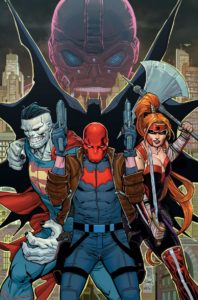
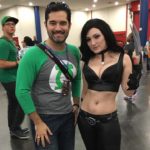
@RobBex2
DC Rebirth has been absolutely solid since its inception, and the ball keeps rolling with Scott Lobdell (Superman) and Dexter Soy’s (Captain Marvel) latest with Red Hood. Lobdell carries on his DC tradition of solid storytelling, as we follow Jason Todd attempting to take down a revamped Black Mask. And though this first ish has its share of expositional dialogue and such, the arc is set up with some admirable pacing. The story bounces back and forth between the present and Jason Todd as a kid/Robin–which could have felt disjointed–but works just fine in this case.
Soy’s panel-filled splash page gives way to great action, which allows a lot more of it to take place in such a condensed comic. The artwork is crisp, clean, and really plays well with the storytelling and the characters. While we don’t see Bizarro, we do see a glimpse of Artemis and the massive weapon she is wielding. If this continues along the successful path of the other DC Comics (which beat out Marvel in July sales, mind you), then Red Robin and the Sweet Potato French Fries should appetize readers with every dish. 4/5 Batastic Bibles.

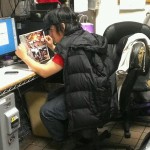
@eggrollko
As comics fans, almost nobody who reads this site will be shocked when I say that we live in the age of the Event comic. There’s one every year, every ongoing series either is interrupted by or has to build to the next event and new comics will come out around every event to help support the story. That’s not a value judgement on the quality of those events, it’s just the age we live in. My previous work for GHG will show that I was a huge fan of Secret Wars last year and almost everything surrounding it, but when it comes to events — that was the exception rather than the norm. Civil War II has thus far landed right at the heart of the norm and, as a comic that ties directly into it, The Accused #1 does as well.
The issue, written by Marc Guggenheim (Arrow co-producer) with art by Ramon Bachs (Detective Comics) and Garry Brown (The Massive) is fascinating on the surface and has elements that I generally love. It’s about the trial of Clint Barton–with Matt Murdock as the prosecuting attorney–for his actions in Civil War II #3 and serves as allegory for a hot-button issue. The courtroom proceedings are interesting and captivating at times (Guggenheim was previously a lawyer, which may play a role in that). Where this issue falls apart, however, is when it tries to bring everything back around superhero stuff related to Civil War II. There’s a strange conspiracy that leads Daredevil to a discovery in the most contrived manner of a plot point that may or may not play a role in CWII going forward. Worse, it’s also a rehash of a decade old plot point that didn’t really work back then and is beyond irrelevant now.
One positive is the gorgeous artwork. Every scene involving Clint Barton is meant to highlight his internal conflict without much dialogue on his part and it succeeds at every level. The entire scene where Barton is being questioned by Matt Murdock on the stand is beautifully drawn and colored to accentuate that inner conflict. The scene where Barton is in handcuffs– in a homage to a famous Hawkeye cover– is also fantastic. On the surface, there is a lot to like about The Accused #1 that’s drsgged down by virtue of having to tie into Civil War II. 3/5 Broken Arrows.
